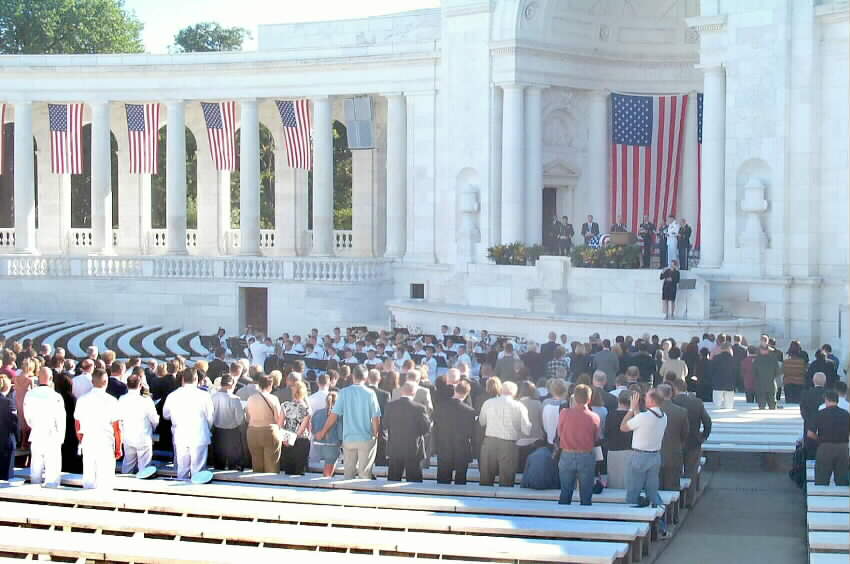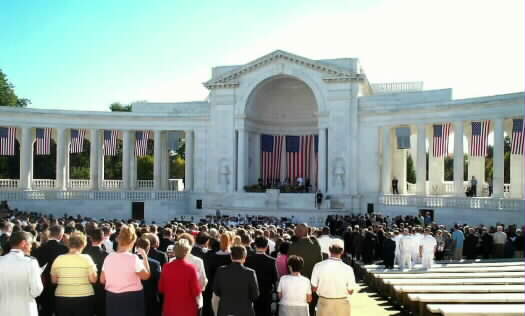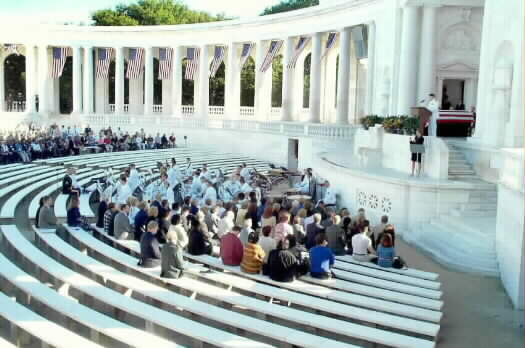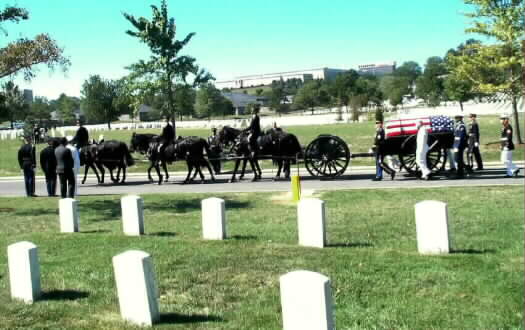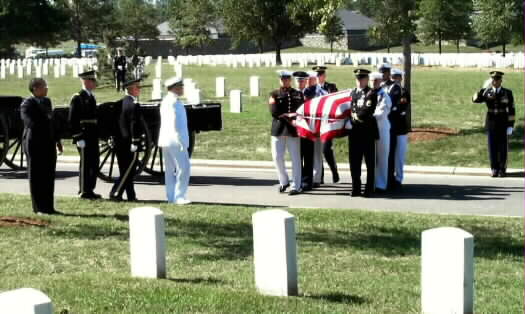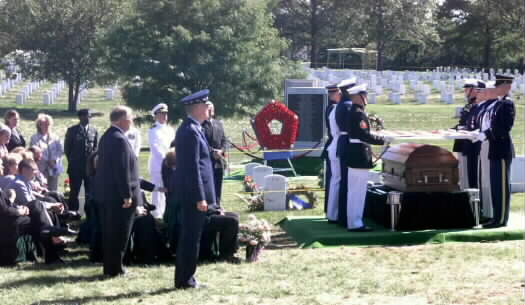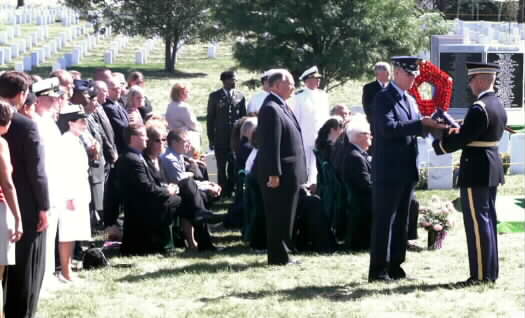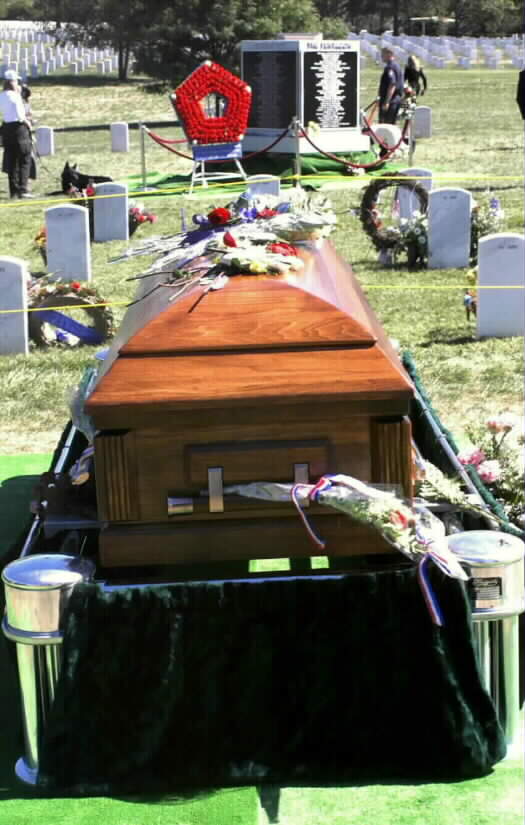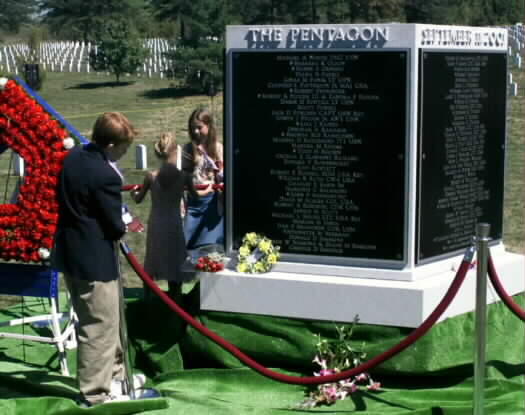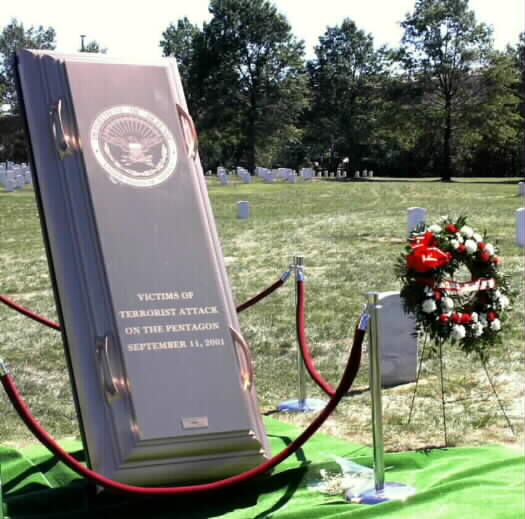On The Pentagon, 11 September 2001
Memorial Amphitheater, Arlington National Cemetery, 12 September 2002
Defense Secretary Donald Rumsfeld said here today those killed in the Pentagon attack “died because they were Americans. Put another way, they died because they were part of a nation that believes in freedom.”
Rumsfeld spoke at the cemetery’s amphitheater at the Armed Forces Funeral Sept. 12. It was the first such funeral in the amphitheater since the one held for the Vietnam War Unknown in 1984.
The casket contained the remains of many individuals killed that day. Some of the remains are those of women and children, but could not be associated with specific individuals. Others belong to identified persons whose
families directed that any additional remains identified be included in the group burial. These families had taken partial remains for burial last fall, MDW officials said.
The group burial was in Section 64 of the cemetery, overlooking the Pentagon. A special headstone marks the spot.
Especially honored in the service were the families of five of the dead who did not receive remains. They were: 3-year-old Dana Falkenberg, a passenger aboard Flight 77; James T. Lynch, a Navy civilian; Navy Petty Officer First Class Ronald Hemenway; Rhonda S. Rasmussen, an Army employee; and Army Colonel (retired) Ronald F. Golinski.
“We remember with special love the five whose remains were not recovered and their families and friends who were denied the peace that comes with placing loved ones in their final place of rest,” Rumsfeld said. “This day these five join the unknowns of past wars even as we pursue the war that is still unfolding.”
Rumsfeld said the 184 Americans who died at the Pentagon did so because they believed in a generous creed of life and “not the twisted views of those who use a noble religion to try to mask their will to power.”
He said they died because of where they worked. He said the Pentagon is a symbol of this generous creed and way of life. “A symbol of military power, to be sure, but power used to right wrong, to do good, to help achieve a more perfect day when nations might live in peace,” he said.
The secretary told the families that there is nothing anyone can do to bring back their loved ones. “But we can celebrate who they were, how they lived their lives and remember how their lives were lost,” he said.
“They will be remembered,” Rumsfeld assured the families. “We will not forget. Know your country shares your sorrow, mourns your loss and prays that God will comfort you.
“May God grant them and you his loving peace.”
Navy Chaplain (Commender) Robert Beltram reads from the New Testament during the Armed Forces Funeral for the Pentagon Victims, September 12, 2001.
Family and friends stand for a reading of the Gospel during the Armed Forces Funeral for the Pentagon Victims, September 12, 2002.
The families of those who received no remains following the crash sit next to the Navy Band during the Armed Forces Funeral for the Pentagon Victims, September 12, 2002.
An Army 3rd Infantry Regiment (The Old Guard) horse- drawn caisson arrives Sept. 12, 2002, at Section 64 in Arlington National Cemetery bearing all the unidentified remains of victims of the September 11, 2001, terrorist attack on the Pentagon.
Troops from the Army’s 3rd Infantry Regiment (The Old Guard) carry the casket from a horse-drawn caisson that bears all the unidentified remains of victims of the September 11, 2001, terrorist attack on the Pentagon. The remains were buried September 12, 2002, in Section 64 at Arlington National Cemetery.
A multiservice flag detail holds the American flag over the casket bearing remains of victims of the terrorist attack on the Pentagon during a group burial ceremony September 12, 2002, at Arlington National Cemetery. Air Force Gen. Richard Myers (center foreground), chairman of the Joint Chiefs of Staff, represented the victims and waits to receive the flag.
As families, loved ones and friends of victims of the September 11, 2001, terrorist attack on the Pentagon watch, Captain Joseph Jancysk of the Army’s 3rd Infantry Regiment (The Old Guard) presents the American flag to Air Force Gen. Richard B. Myers, chairman of the Joint Chiefs of Staff. The group burial ceremony was held at Arlington National Cemetery September. 12, 2002.
The casket bearing the remains of victims of the September 11, 2001, terrorist attack on the Pentagon rests in Arlington National Cemetery’s Section 64 near a group marker (rear) with the names of all 184 victims. Photo by Rudi Williams.
Youngsters look at the Vermont granite memorial group marker in Section 64 at Arlington National Cemetery that lists the names of all 184 victims of the September 11, 2001, terrorist attack on the Pentagon.
The vault cover for the group casket is engraved with “Victims of Terrorist Attack on the Pentagon, September 11, 2001.”
Michael Robert Patterson was born in Arlington and is the son of a former officer of the US Army. So it was no wonder that sooner or later his interests drew him to American history and especially to American military history. Many of his articles can be found on renowned portals like the New York Times, Washingtonpost or Wikipedia.
Reviewed by: Michael Howard

